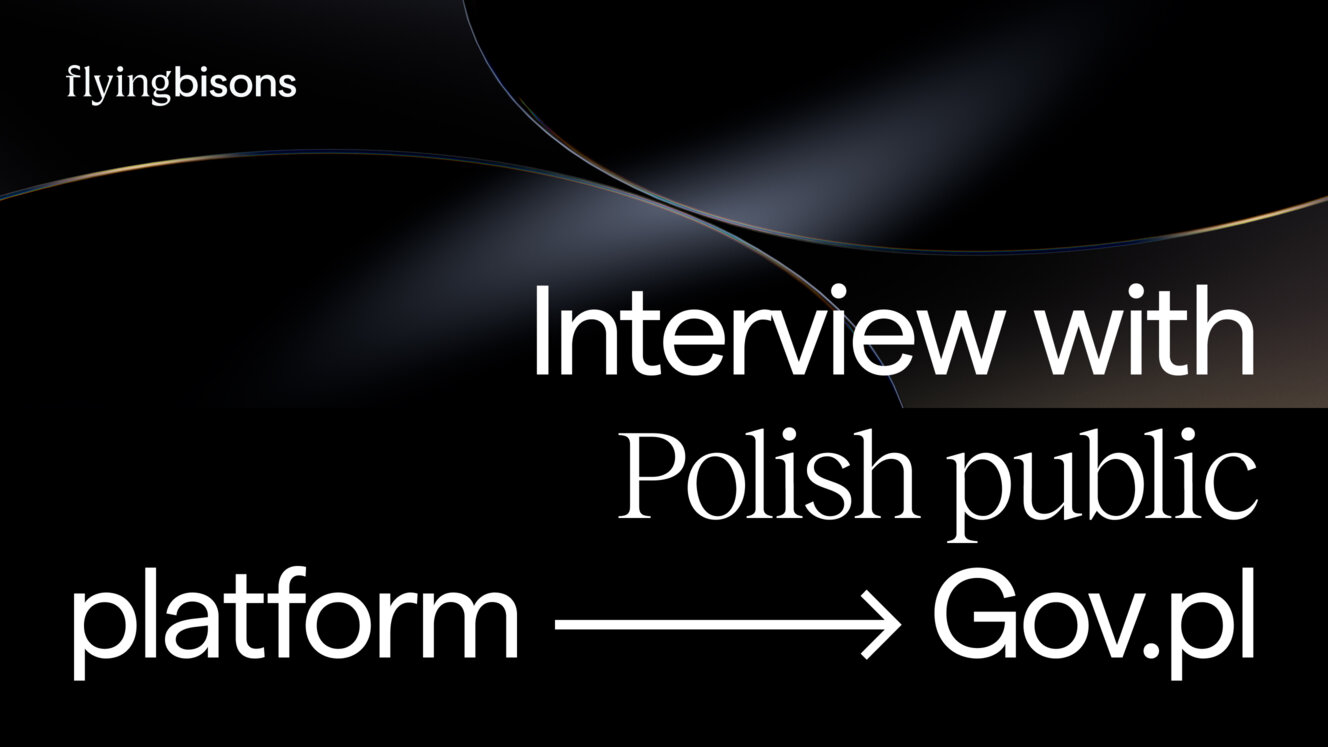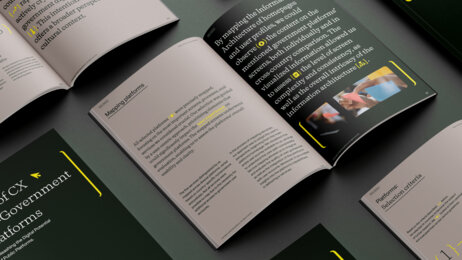
Piotr Golianek
-
Jun 27, 2024
-
8 min read
What three megatrends will we observe in the coming years in digital public service platforms?
Firstly, AI, which is disruptive in general, creates numerous new possibilities for public services through intelligent user support. Unlike daily activities such as contactless payments and social media usage, administration-related issues are less frequently encountered, hence the increased need for support. To address this, we are excited to announce the upcoming release of a chatbot assistant in the mObywatel app.
Secondly, accessibility has been a crucial part of our digital work. With the European Accessibility Act, the need for inclusive design is finally becoming a common practice required by law. In Poland, at the Centre for Informatics Technology, we've decided to establish a separate accessibility team to bring more visibility to the topic and ensure we follow best practices. Our research team has conducted exploratory research on the needs of people with visual impairments and deaf individuals, so our design of public services considers these user groups. Promotional videos for mObywatel now include audio descriptions and are translated into Polish Sign Language.
Finally, the omnichannel approach is already present in the private sector and is still trending in the public sector. Creating such an experience requires thinking about holistic journeys and the relationship between digital and offline experiences, focusing on two main stakeholders: citizens and employees of administration offices. Transitioning from paper-based processes to online paperless self-service is critical. An example is e-Payments, where citizens can easily fulfil administrative and financial obligations through the mObywatel app and web service.
– Karina Koprowska, UX/UI design Team, Manager; Centre for Informatics Technology (gov.pl)
How would you assess the current readiness of the Polish public sector to provide online services?
Poland has much to offer internationally regarding online services and our approach to building solutions for citizens. However, there is still work to catch up with the EU regarding digital public services. As indicated by DESI 2023, the services we digitalise are mostly pre-filled, making the user journey easier (78% in Poland compared to 68% in the EU). The improvements made in the last two years are significant, and we plan to continue this momentum. Public services are now more accessible and available on the go, 24/7. The foundation for a public ecosystem has been laid, including optimising design and development processes and introducing an e-service generator, a tool for local administrations to digitalise their services for local communities. This is a giant leap forward for the Polish public sector. New solutions like e-Doręczenia (akin to Gmail for administration) are already in the pipeline, moving communication from citizens to offices to a new digital level.
– Monika Bilska, Business Owner; Centre for Informatics Technology (gov.pl)
What are the biggest challenges in creating a good CX (Customer Experience) on public platforms?
The biggest challenge is finding the golden mean between central and local solutions. The omnichannel approach, recreating and enhancing the customer experience with private sectors, such as banking and telecoms, is crucial. Public platforms are complex organisms covering diverse life events. The key is providing a single interface for users to turn to whenever they need to perform any administration-related task. This gateway offers reliable and up-to-date solutions. The more significant challenge is ensuring that all connected services are built coherently. This is why we've been working on an e-services generator for local administrations to digitalise services.
– Natalia Kijewska, E-Services Quality Department, Director; Centre for Informatics Technology (gov.pl)
Which areas (such as labour, transportation, and education) are leaders in digital transformation when it comes to public services?
Several areas are leading in digital transformation:
- Health and access to e-health records, including COVID-19 vaccine certificates in the mObywatel app and digital verification of prescriptions.
- Annual tax statements, which are pre-filled with data provided by employers and can be submitted through a "one-click" process.
- Due to their high demand, common services like issuing IDs and passports were among the first to be digitalised.
– Monika Bilska, Business Owner; Centre for Informatics Technology (gov.pl)
What resources, services, publications, and educational materials do you use to bring the best practices to gov.pl?
We benchmark ourselves not only within our sector but also against other markets. We aim high, looking to innovative banks (as the banking sector in Poland is highly competitive) and telecom companies while getting inspired by the work of our colleagues in Ukraine, Estonia, the UK, and Denmark, to name a few. We even consult with major tech companies such as Apple and Microsoft to ensure our approaches align with the latest standards. We create or adjust our standards based on market insights – from product design approaches and the tone of voice for our services to our design system.
Market analysis and benchmarks, such as the United Nations E-Government Survey, DESI e-Government Benchmark, and the State of CX in e-Government Platforms, are incredibly useful.
We also continue to listen to our users. Our research team is responsible for conducting research with participants sourced from our target groups – primarily focusing on usability testing and quantitative research, with some exploratory efforts. However, this year, we aim to increase exploratory research (IDIs, FGIs, ethnography). Meanwhile, our monitoring team tracks user feedback once a product goes live – mapping all touchpoints (help desk's inbound calls, comments in app stores, satisfaction surveys, etc.) and gathering and analysing back.
Working at the Centre for Informatics Technology, we are proud and aware of the transparency of our work. We eagerly share the outcomes of our research projects and prototypes well before functionalities are launched. Our users are our top priority. The responsibility and satisfaction of creating experiences for millions drive us to consistently seek feedback and incorporate the voices of our users when designing solutions. Our motto encapsulates our mission, which is:
- People
- Innovations
- Technology
Our services successfully compete with private solutions. Our key app, mObywatel, has won several awards, including two, last week at the Mobile Trends Awards gala.
Learn more about us at coi.gov.pl
– Milena Rokiczan-Kwapisz, Senior UX Researcher; Centre for Informatics Technology (gov.pl)



















